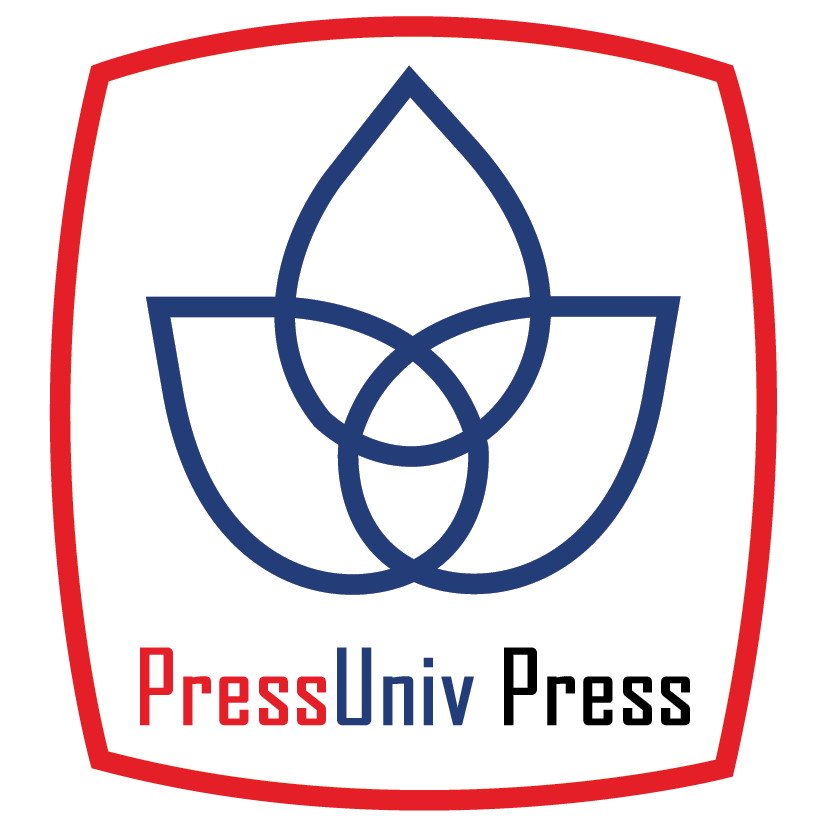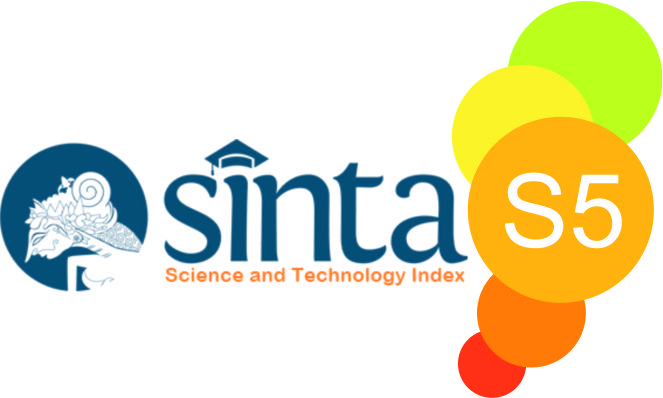USED LUBRICANT OIL PURIFICATION WITH ACID AND CLAY METHOD
Abstract
Keywords
Full Text:
PDFReferences
Direktorat Jenderal Ketenagalistrikan, “Realisasi Konsumsi dan Produksi Listrik Nasional Di Tahun Lalu Meleset Dari Target,” Kontan.co.id, Jakarta, 2021.
D. I. O. P. Rois, “Laporan penelitian daur ulang minyak pelumas bekas menjadi minyak pelumas dasar,” Universitas Pebangunan Nasional “Veteran” Jawa Timur, Surabaya, 2012.
Y. Pratiwi, “Pengolahan Minyak Pelumas Bekas Menggunakan Metode Acid Clay Treatment,” J. Tek. Sipil UNTAN, vol. 3, no. 1, p. 6, 2013.
I. I. Ishak, Ed., Keterkaitan Pengelolaan B3 Dan Pengelolaan Limbah B3, Pusat Pend. Jakarta: Pusat Pendidikan dan Pelatihan Kementrian Negara Lingkungan Hidup, 2008.
Peraturan Pemerintah Republik Indonesia Tentang Tata Cara dan Persyaratan Pengelolaan Limbah Bahan Berbahaya dan Beracun, Peraturan Menteri Lingkungan Hidup dan Kehutanan Republik Indonesia Nomor 6 Tahun 2021. Indonesia: Menteri Lingkungan Hidup dan Kehutanan Republik Indonesia, 2021, pp. 1–301.
U. Q. P. Swya, “Laporan Praktikum Water Content Distilation,” Kota Lhokseumawe, Aceh, 2018.
A. M. Kusumah, “Perolehan Kembali Bahan Dasar Pelumas Dari Limbah Pelumas Mesin Dengan Metode Adsorpsi dan Penciriannya,” Institut Pertanian Bogor, 2013.
Senoadi, S. Adi, and R. Permatasari, “Pengaruh Penambahan Zat Aditif X terhadap Viskositas, Performa Mesin dan Emisi Gas Buang Sepeda Motor Honda CB150R,” Mesin, vol. 10, no. 1, 2019, doi: 10.25105/ms.v10i1.4130.
A. S. A. Mubarok, “Studi Pemurnian Minyak Pelumas Bekas Dengan Menggunakan Asam Nitrat (HNO3) (Merk Prima XP62 Semi Sintetik SAE 20W - 50),” Universitas Brawijaya, 2011.
R. Siskayanti and M. E. Kosim, “Analisis Pengaruh Bahan Dasar Terhadap Indeks Viskositas Pelumas Berbagai Kekentalan,” J. Rekayasa Proses, vol. 11, no. 2, p. 94, 2018, doi: 10.22146/jrekpros.31147.
D. K. Sari and N. Nopitasari, “Perbandingan Kualitas Pelumas Motor 4T Di Palembang Dengan Parameter Uji Specific Gravity, Kinematic Viscosity, Flash Point, Pour Point, Total Acid Number (TAN) dan Vacuum Distillation,” J. Tek. Patra Akad., vol. 9, no. 01, pp. 39–45, Sep. 2018, doi: 10.52506/jtpa.v9i01.68.
C. P. W. Mahesti, M. F. Kumalasari, H. Saroso, and Y. Maryanty, “Studi Perbandingan Metode Pengujian TAN (Total Acid Number) PLTGU Dengan ASTM D-974,” DISTILAT J. Teknol. SEPARASI, vol. 6, no. 2, pp. 451–456, Aug. 2020, doi: 10.33795/distilat.v6i2.157.
D. Darmawan, “Analisa Kelayakan Umur Pakai Oli Yamalube Matic SAE 20W-40 Berdasarkan Viskositas Kinematik Dan Total Acid Number Pada Sepeda Motor Yamaha X- Ride,” Institut Teknologi Sepuluh Nopember, 2018.
S. Bahri, M. Muhdarina, N. Nurhayati, and F. Andiyani, “Isoterma dan Termodinamika Adsorpsi Kation Cu2+ Fasa Berair pada Lempung Cengar Terpilar,” J. Natur Indones., vol. 14, no. 1, p. 7, Nov. 2012, doi: 10.31258/jnat.14.1.7-13.
M. M. K. Motlagh, A. A. Youzbashi, and Z. A. Rigi, “Effect of Acid Activation On Structural and Bleaching Properties of A Bentonite,” Iran. J. Mater. Sci. Eng., vol. 8, no. 4, pp. 50–56, 2011.
Standar Nasional Indonesia, Tata Cara Pencatatan dan Identifikasi Hasil Pengeboran Inti, vol. 2436. Indonesia, 2008, pp. 1–41.
U. H. Hasyim, “Pengaruh Konsentrasi HCL dan Massa Adsorbent Dalam Pengolahan Limbah Pelumas Bekas Dengan Kajian Keseimbangan Adsorosi Bentonit Terhadap Logam Fe,” J. Integr. Proses, vol. 6, no. 4, p. 191, Dec. 2017, doi: 10.36055/jip.v6i4.2545.
S. E. Nugroho, A. Setiawan, and Liliasari, “Struktur Konsep Mahasiswa Calon Guru Tentang Medan Elektrostatik Berdasarkan Analisis Framing,” J. Pendidik. Fis. Indones., vol. 6, no. 1, pp. 48–52, 2010.
J. Aguilar, C. Almeida-Naranjo, M. B. Aldás, and V. H. Guerrero, “Acid Activation Of Bentonite Clay For Recycled Automotive Oil Purification,” E3S Web Conf., vol. 191, no. August, p. 03002, Sep. 2020, doi: 10.1051/e3sconf/202019103002.
K. Anwar, M. Mardiyono, and N. Harmastuti, “Karakteristik Pektin Kulit Buah Sukun (Artocarpus altilis (Park.) Fosberg) dan Uji Kemampuan Adsorpsi Logam Berat pada Limbah Laboratorium Stifera Semarang,” J. Ilm. SAINS, vol. 22, no. 1, p. 8, Jan. 2022, doi: 10.35799/jis.v22i1.35537.
I. M. Mara and A. Kurniawan, “Analisa Pemurnian Minyak Pelumas Bekas Dentan Metode Acid and Clay,” Din. Tek. Mesin, vol. 5, no. 2, pp. 106–112, Jul. 2015, doi: 10.29303/d.v5i2.36.
T. Lathifah, N. Yuliani, and G. A. P. K. Wardhani, “BENTONIT TERAKTIVASI ASAM SULFAT SEBAGAI ADSORBEN DALAM PEMURNIAN PELUMAS BEKAS,” J. Sains Nat., vol. 9, no. 1, p. 1, Mar. 2019, doi: 10.31938/jsn.v9i1.170.
J. Lianna, Y. Karyati, and H. Santosa, “Penjernihan Minyak Pelumas Bekas Dengan Metode Penjerapan,” J. Teknol. Kim. dan Ind., vol. 1, no. 1, pp. 252–257, 2012, [Online]. Available: http://ejournal-s1.undip.ac.id/index.php/jtki.
D. W. Aji and M. N. Hidayat, “Optimasi pencampuran carbon active dan bentonit sebagai adsorben dalam penurunan kadar FFA ( free fatty acid ) minyak goreng bekas melalui proses adsorbsi,” Jur. Tek. Kim. Fak. Tek. Univ. Diponegoro, pp. 1–5, 2011.
DOI: http://dx.doi.org/10.33021/jenv.v8i2.3844
Copyright (c) 2023 Asih Wijayanti

This work is licensed under a Creative Commons Attribution-ShareAlike 4.0 International License.
Journal of Environmental Engineering and Waste Management Published by PresUniv Press, in collaboration with IESA and APIK Indonesia Network




